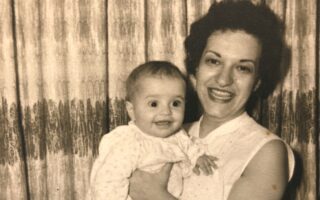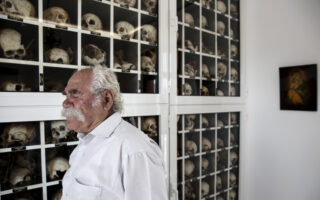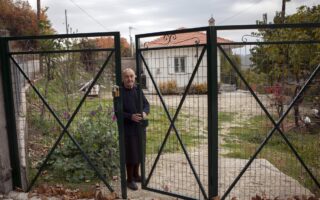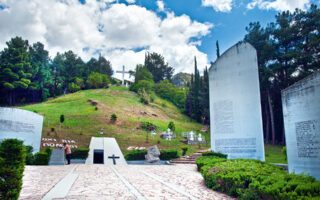2023: Sad days for ‘adoptable’ children in Greece
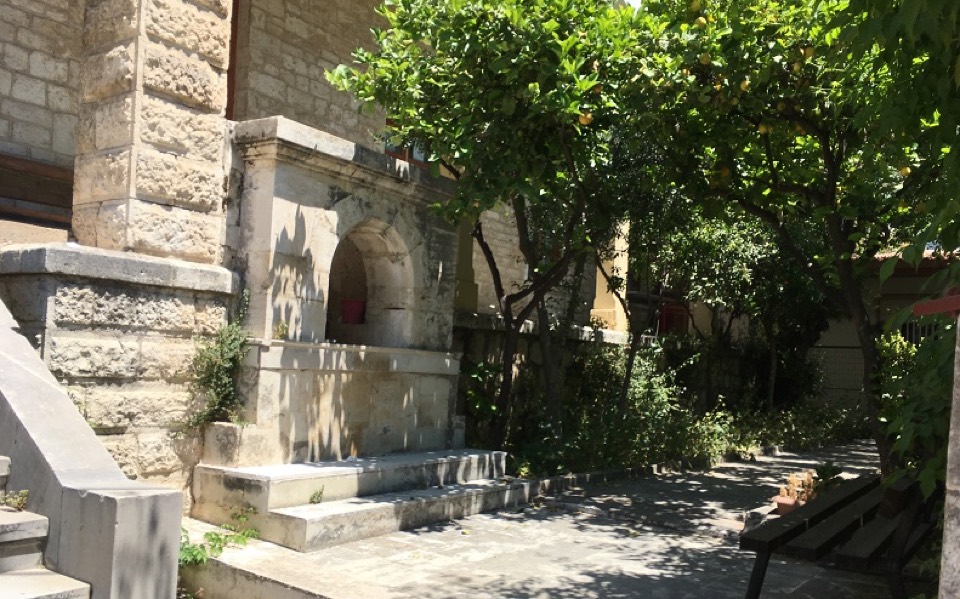
The year is 2023: a major adoption scandal has unfolded in Hania, Crete. The adoption traffic may have been going on for the past 10 years? Ten years? How about 70 years? Adoption in and from Greece is celebrating a bizarre anniversary this year. Let me take you back to 1953, back 70 years ago.
1953: On the frontline
What significance does the date of 1953 bear for Greece? And why does an adoptions scandal in 2023 mark a sad anniversary? And a reminder of lack of action taken? Also, how does the 1953 date place Greece in the wider context of global twentieth-century history? This article discusses the historic adoption movement of postwar Greece, a movement that then-current terminology named “intercountry adoption,” but that today is referred to as international adoption and is associated with transcultural and/or transracial child placements. All these terms are somewhat unsatisfactory, if not misleading, given that the modern international child adoption flow is not one of multilaterism, or even bilateralism, but is usually conducted in a one-way direction that invalidates the “inter” or the “trans” of the lofty definitions.
The post-WWII adoption history of Greece, which remained underexplored for decades, was characterized by the same unilateral flows: some 4,000 Greek children left their country for adoption in the United States after 1950, and another 600 children left for adoption in the Netherlands. Small numbers of Greek adoptees were raised in other countries, such as Sweden, France, Switzerland, Cyprus, Canada or Australia. Greece ended its overseas adoption programs around 1975, but has since been a so-called receiving country. Is this news? For many, yes. It really shouldn’t be: Nikos Konstandaras (Kathimerini English Edition) wrote on this topic in 1996. Mary Theodoropoulou and Aigli Brouskou documented it in their publications. What is news is that nothing substantial has ever been done to redress the past of Greece’s adoption history of the 1950s and 1960s. With what kind of hope does that leave the victims of today’s scandal?
The year 1953 is the lynchpin date that connects the Greek historic adoptions to those from other countries, such as Korea, Japan, Germany, Austria, Ireland and Italy. The Greek adoption movement with destination “rich America” had been negotiated since 1948 and was under way by 1950. The first half of the 1950s saw adoptions that addressed the needs of children, typically called “orphans” or “war orphans” (in the aftermath of World War II and the ensuing Civil War). The first wave of Greece’s history of “adopting out” to the United States built on WWII relief efforts, postwar family migration or reunification, and the common goal to resettle stateless and “displaced persons” (as per the well-known 1948 US Displaced Persons Act). Models and also legal provisions for European adult migration and refugee care were developed in the turbulent 1940s. Models for child migration and overseas childcare by way of “supply-driven” intercountry adoption soon followed.
‘Symbolic’ adoptions
A precursor to formal adoptions was the system of symbolic adoptions, whereby families in more prosperous countries committed to financially and morally supporting children from poorer countries. These families did so from afar, by sending money, letters and care packages. The Greek Civil War had left thousands of orphaned children in a war-torn country, many of whom had relatives in the United States. Greek Americans were, therefore, the first addressees of Greek appeals for assistance. Greek Americans stepped up to commit to informal or symbolic adoptions and later also to formal adoptions. Such symbolic and remote fostering arrangements, however, which were often called “adoptions,” did not alter the child beneficiaries’ family or legal status, whereas intercountry adoption re-created the child’s personal and legal identity and, subsequently, its nationality.
Jewish child survivors of WWII and the Holocaust were among the first to be united or reunited with relatives in the United States or in other countries. Many were formally adopted by American relatives (from 1946 on); older teenagers could, by 1948, decide to move to the newly formed state of Israel. By the late 1940s, too, the United States was negotiating special immigration provisions for children fathered by American servicemen stationed abroad, focusing first on Germany and Austria, and, by the early 1950s, on Japan and Korea. Evangelical Christian adoptions became widespread in most Asian intercountry adoption flows, following the rationale that “mixed-race” children needed to be “rescued” from the patriarchal societies that marginalized them. Greece never saw an American presence on the scale of what Korea, for instance, experienced. Therefore, the logic of saving “mixed-race” children, “rejected” by their local societies, did not apply to Greece. But, in the fervor of Cold War anticommunism, the categories were easily confused.
The scholars who today contribute to the field of critical adoption studies agree that postwar and early Cold War adoption overseas may be characterized as an anticommunist praxis – beyond a site of women-shaming. The in-depth study of the early 1950s adoptions with an eye to international geopolitics and the growing divide between West and East is, therefore, a lingering debt that is still owed to the past. My own historical study, “Adoption, Memory, and Cold War Greece: Kid pro quo?” (2019) analyzes the lasting human consequences of US interference in postwar Greece, even if this action began as humanitarian intervention.
The conflict-infused ideology of saving ‘orphaned’ and ‘abandoned’ or ‘relinquished’ children was artificially protracted… It also perpetuated the gridlock of shame resting on unwed motherhood and ‘illegitimacy’ at birth
The date of 1953, when the United States first launched nonquota “orphan visas,” helps the reader trace the global, Cold War contours of essentially neocolonial power dynamics between the United States and war-afflicted and exhausted “partners” – dynamics that reduced vulnerable children and especially unwed mothers to pawns in an international chess game. Throughout the early 1960s, the conflict-infused ideology of saving “orphaned” and “abandoned” or “relinquished” children was artificially protracted. It kept blurring otherwise important geographical, historical, economic and cultural distinctions (including diverging definitions of what overseas adoption legally entailed). It also perpetuated the gridlock of shame resting on unwed motherhood and “illegitimacy” at birth. Thus, the plan to rescue Greek “war orphans” (whether the war had long ended or not) took hold with the best initial intentions but not with critical reflection, let alone with positive outcomes. The experience was nothing short of traumatic for many minors (some up to 14 years old) and for numerous silenced birthmothers. International adoption of any country’s children can hardly be equated with a post-crisis return to normalcy. In the case of Greece, it attests to America’s undue influence in the process of postwar state-(re)building. For a Greece committed to postwar economic reconstruction and to balancing transatlantic relations, the US-bound adoption traffic became one of the ideological but all-too-real battlefields of the escalating Cold War.
First formal procedures
Τhe first petitions for formal adoptions from war-torn Greece again originated in kinship networks already established in the United States. The first Greek-American charitable group to commit to rescuing “orphans” on a mass scale was AHEPA, the American Hellenic Educational Progressive Association (founded in 1922 in Atlanta, Georgia). From the late 1940s on, AHEPA preoccupied itself with adapting the patterns of adult migration to child migration. Through the late 1950s, AHEPA tried hard to establish a monopoly on Greek intercountry adoptions, much like Catholic charitable foundations were doing in Italy and later in Ireland or like Evangelical Christian organizations were doing in Korea and Japan. The Greek adoption world of the mid-1950s was penetrated also by the International Social Service (ISS), competing with AHEPA, and by local lawyers who hurriedly “specialized” in foreign adoptions. The Greek Queen Frederica was instrumental in trying to legitimize otherwise contested royal welfare institutions. She played a role in overseas adoptions but by no means the largest one. So did a few other middlemen who developed an international adoption business. The competition between the AHEPA and the ISS was especially fierce, each vying for a greater slice of the adoption pie, but pursuing these adoptions with very different philosophies and practices. For one, the ISS was not seeking any financial gain. By 1962, however, many intermediaries retreated because the tide had turned, and the widespread practice of adopting out to couples who were not Greek or Greek American had encountered domestic Greek resistance.
The first Greek adoptions served children in need of families. After 1953, the demand for “adoptable” children started to surpass the supply, and intercountry adoption began to cater to families in need of children. Given that American couples (typically childless, white and well-to-do) had sought-after, hard currency US dollars on offer, the search for more adoptable children was on. Competition among Greek adoption brokers intensified. Pantelis Rozakis, a Greek politician and lawyer, wrote to an American couple, in a private letter dated 12 February 1961:
“I would…like to advise you – as your lawyer – not to tell that you have already adopted two children, because we will perhaps meet any hesitating by the natural parents. You may only tell that you have not had own children from your marriage and for this reason you want to adopt children of Greece.
…many Americans . . . who had adopted, in the last time [i.e., year, June and July 1960], many, many Greek children from poor and having many children families . . . It is . . . enough that the natural parents make a solemn [official] abandon act or declaration before a public notary… The orphans or foundling children are very rare and not too healthy. Unless this [Otherwise], you will need two years, at least, to complete an adoption and you are obliged to bring reports and reports and certificates and certificates from the International Social Organization [International Social Service], which exige [require] time and time and expenses and expenses and without certitude for an adoption.”
The occasional odd twists in Rozakis’ language do not hide what is really going on: he is coaching American couples on how to lie and work on the emotions of the birth parents. He is also presenting the less cumbersome and more certain solution in the Greek adoption world of the early 1960s: rather than giving a home to a foundling or to a true orphan, he proposes the faster route of persuading existing families to give up one of their children (typically a newborn girl). In his mind, a loving family might well be broken up for a new one to be formed.
Time and again, extensive research and archival documentation lead to an interpretive framework that ties postwar intercountry adoption to foreign relations, Cold War power dynamics, inadequate social infrastructure, and lack of professional expertise or ethics. Through the 1950s, the flow of adoptees was controlled at the source by a small circle of Greek state bureaucrats, orphanage directors, local mayors, doctors, lawyers, judges, Greek-American community leaders and even travel agents, with little direct interference from the Greek government or oversight from American federal or state authorities. The adoption protocols and methods used ranged from legal and slow-moving to hasty, dubious and plain illegal practices, with the ISS alone insisting on proper casework. Desiderata and other criteria for adopting, such as home studies, background investigations and references, and social worker visits and follow-up checks throughout a probationary period, became decisive requirements in Greek overseas adoptions only from the 1970s on, by which time the profession of social worker had gained greater recognition as well.
Lack of accountability
Together, these Greek third parties and lax governments unwittingly created the practice of international adoption that is still with us today, complete with all the weaknesses of such a hurried new system, which, for the first years, put only ever reactive measures in place: hastily taken decisions, shoddy record-keeping, lack of oversight and follow-up, lack of accountability years later. The ISS adoption dossiers are a bright exception, even if many of their placements abroad should still not have happened. Compare these practices with those of the AHEPA lawyers, whose records either “disappeared” or were otherwise lost. The AHEPA presidents and lawyers were the first to feel the pulse of international adoption from Greece and to notice how “market dynamics” were rapidly changing, from a supply-driven to a demand-driven adoption flow. By early May 1959 and with the so-called Scopas scandal, they were also the ones responsible for the first major scandal of the kind that has rocked intercountry adoption to this day and that inevitably raises charges of cross-border child trafficking. A typical international adoption scandal, of the type that reoccurs worldwide and with some frequency, operates on the following premises: monetary gain, lack of due diligence, “lost” or falsified paperwork, deceived birth families, uninformed adoptive families, innocent children – all covered by the mantle of “confidentiality,” the child’s “best interests,” rigid statutes of limitations, and the inexorable passing of time.
Across the Atlantic in four waves
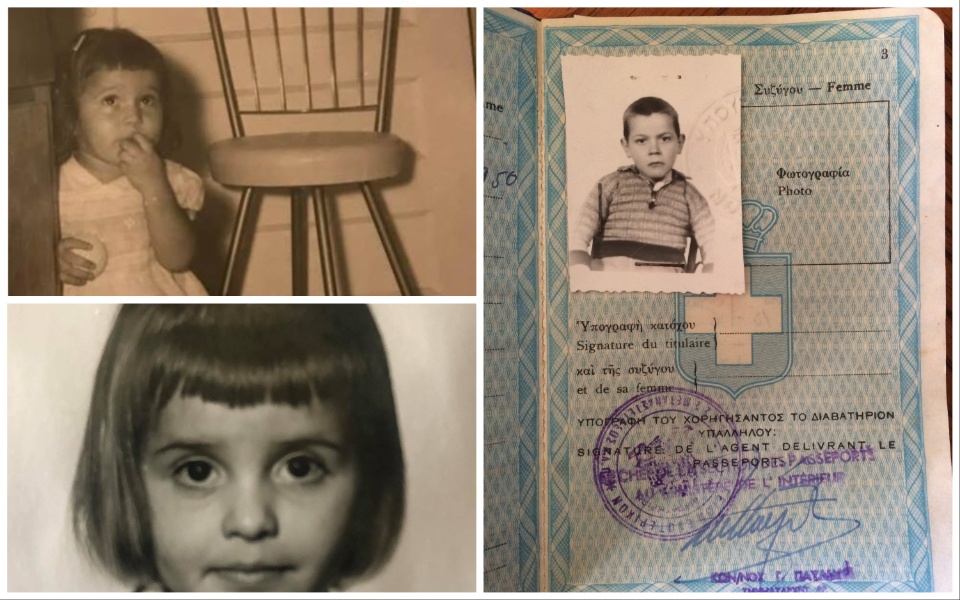
Greek-born adoptees arrived in the United States in four distinct waves. A first wave of mainly kin migration preceded the landmark US Refugee Relief Act of 1953: this first wave lasted from 1950 through the late summer of 1952, and it counted more than one thousand cases, among them many young relatives of Greek American couples adopting from the home country. Many came as sibling groups, with at least one older sibling whose memory kept the others connected to their roots. The members of this first wave tend to not look for their origins in Greece: they likely knew them all along, and the extended family’s experience was often steeped in Civil War trauma.
The temporary provisions of the RRA raised the Greek adoption movement’s second wave: they allowed more than 500 Greek children to enter the States between 1953 and 1956 (but in reality between late spring 1954 and fall 1956). This second wave was marked by the novelty of “stranger” adoptions of far younger children: infants and toddlers went to unknown new parents in the United States by way of a prevailing system of adoptions by proxy. They met at the airport (most often in New York) with overjoyed but often underprepared adoptive parents who were of diverse ethnic and religious backgrounds – no longer were the Greek Americans in the majority.
The number of 1,360 adoption cases of the third wave, from 1957 to 1962, surpassed those of the first (1,246) and the second wave (500+ cases). If we open up the time frame even further, from 1963 to 1975, we count a fourth wave of 932 Greek-to-American adoptions, which then fully coincide with the Greek-to-Dutch adoptions. As the need of poor Greek children diminished, and as Greece experienced a rapid reconstruction phase, overseas adoptions did not decrease in numbers; rather, the numbers rose and the competition for “adoptable” children heightened. In other words, the more prosperous version of Greece of the late 1950s and 1960s was more addicted, not less addicted to international adoption – for the diplomatic bonds that it forged, for the political goodwill it created, for the money that it brought in, for the way it relieved the social welfare budget. That fact debunks the myth that adoptions from Greece were by necessity motivated by the country’s poverty or by its civil strife. The same argument can be made for Korea, that international adoptions peak when they are least addressing a need.
Few young mothers realized that they would never see their children again. Even fewer were aware that this separation would leave lifelong emotional scars, for mother and child alike
Technically, the age limit on the eligible children was set at age 10, which meant that plenty of Greek 8- to 10-year-olds were adopted out overseas as well. Such was the growing demand for white adoptable children that the United States permitted American prospective parents to petition for up to two children per citizen couple, and the US legislature even raised the age limit on the adoptees to age 14 in the post-1956 phase. Again, exceptions could be granted for the purpose of keeping siblings together. Older children came with histories, memories, likes and dislikes that were much more outspoken than those of newborns. But the hopeful American parents were told and believed that children were blank slates, and that all they needed to provide was ample love. The love that conquers all was supposed to come from the unknown American couple, while the unwed young Greek mother was told that her love was not good enough, and that, if she truly loved her child, she would need to give it up to a “proper” family, “for a better life.” Few young mothers realized that they would never see their children again. Even fewer were aware that this separation would leave lifelong emotional scars, for mother and child alike. Professional counseling did not exist in their world or was not deemed necessary.
The coercive rhetoric with which vulnerable single mothers were beleaguered merits further study. Families, village and church communities, and also hospital personnel and social workers joined in the effort of relentless persuasion bordering on coercion (and occasionally crossing the line into illegal practices). As scores of recent news reports show, the birth mother-victims of these forced adoptions are now speaking out in Ireland, Canada, the United States, the United Kingdom, Australia and the Netherlands – to name just a few leading countries. The Greek birth mothers, however, if still alive, have reached an age at which this revolution may well come too late. Many of them still carry the shame and few are willing to talk about this sensitive subject, let alone seek the redress they are owed.
The handling of these Greek-to-American adoptions resembles that of other early Cold War adoption movements, which share the following important characteristics as they moved from humanitarian initiatives to “shortcuts” to family-building: a) the intercountry adoptions were seen as part of migratory flows and the rules that governed them were conceptualized as immigration law, not as actual adoption legislation, with all the special care the latter would have required; b) voluntary organizations and agents with political, ethnic and religious interests played critical roles in the design of the first “emergency” migratory dispensations and moved toward rapid implementation of the new and untested schemes, with far more idealism than expertise; c) the exaggerated push for “speed” resulted in haphazard procedures and sloppy record-keeping, and drove such risky practices as adoption by proxy; d) the rhetoric of “urgency” perpetuated also the language and imagery of the “rescue” of “war orphans,” long after the war had ended and often referring to children who had at least one living parent; e) that verbal and visual rhetoric also negated the fact that hundreds of children were brought into the United States from countries that had traditionally fostered very different conceptions of child-rearing and adoption, as in Greece where postwar child-rearing was still grounded in a more communal model, that of the extended family and/or the village, and where traditional “simple” adoptions did not sever the children from their first families, from their original names, identities, cultures and nationalities.
Today, the Greek-born adoptees converse with other adoptee activist groups and strive to access and restore the Greek part of their identity; they seek recognition of their Greek personhood – of their entire personhood. They help inform global debates on international adoption and post-adoption services and they press for investigations based on open records. Research and redress have been slow in coming. Investigations into the historic adoptions since the lynchpin 1953 Act, which tied the Greek phenomenon to the global adoption flows that have outlasted it, have been few and far between. But the 70-year anniversary in 2023 promises to advance the kind of revisionist reading of adoption histories that reckons with the voices of the adoptees themselves. Unless it is subverted by yet another adoption scandal…
Gonda Van Steen holds the Koraes Chair of Modern Greek and Byzantine History, Language and Literature in the Department of Classics at King’s College London. She is the author of five books, the latest of which is “Adoption, Memory, and Cold War Greece (2019).”
